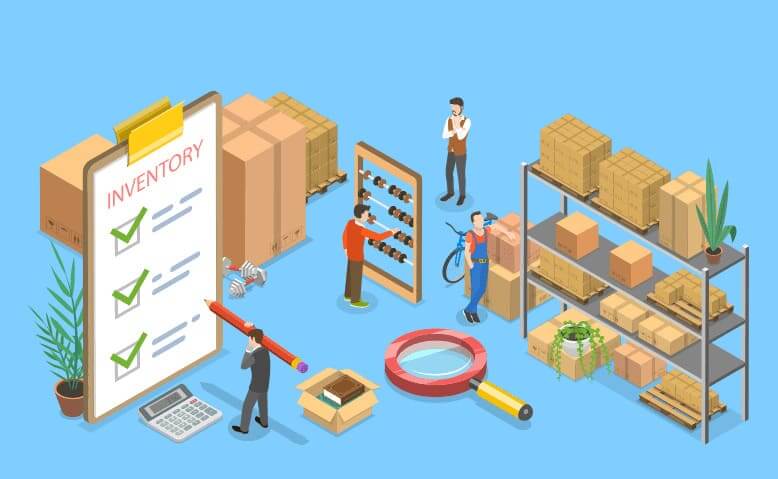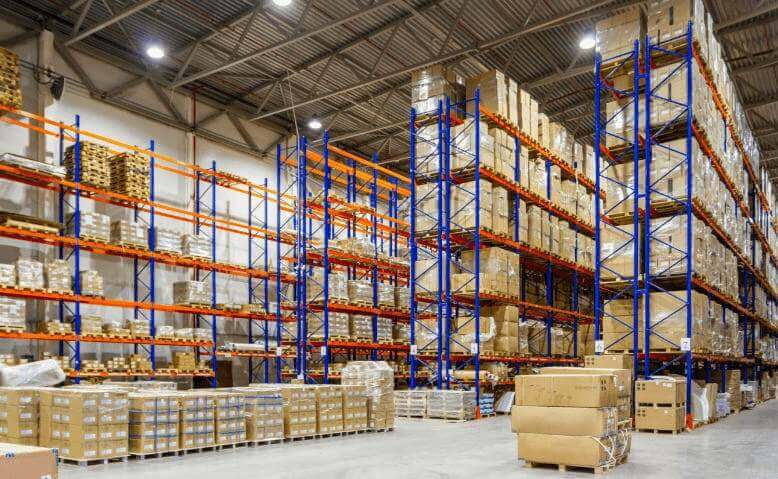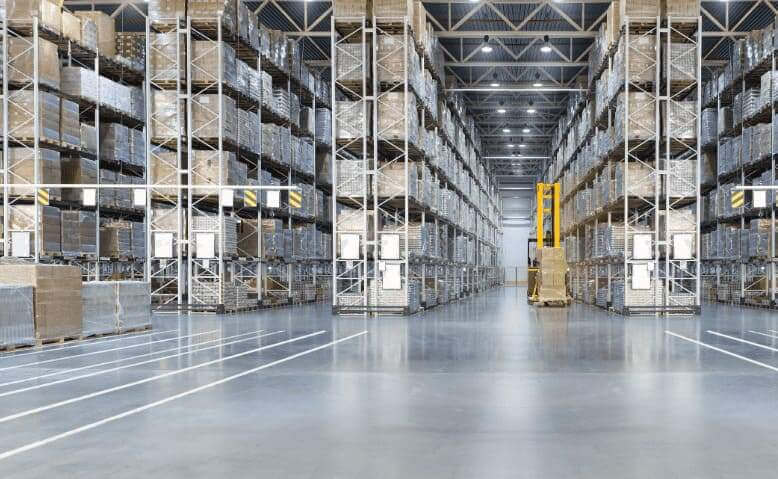How to Choose the Right Valve for your Industrial Requirement

How to Choose the Right Valve for your Industrial Requirement
Table of Contents
- Introduction
- Selecting the Right Valve for Industrial Applications
- Final Words
Introduction
Industrial valves are essential tools that play a pivotal role in the management of flow and pressure within an industrial setup. These tools, constructed from materials like carbon steel and stainless steel, ensure that substances such as liquids, gases, and powders move where they should, at the right speed and without any unwanted pressure build-up. The task of selecting the appropriate industrial valve is critical; it influences the efficiency, safety, and reliability of industrial operations. This discussion will guide you through the process of aligning your specific needs with the correct valve, a choice that stands at the core of a well-functioning industrial system.
Selecting the Right Valve for Industrial Applications
Following are a few factors that need to be considered when selecting the right valve for industrial needs:
Understanding Your Valve’s Purpose
The journey to finding the right valve starts by asking what job the valve needs to do in your setup. Is it there to manage the flow like a traffic light, or is it more like a barrier to keep things in place? It’s important to think about how critical the valve’s role is. If it were to stop working, would it cause a small hiccup or a major problem? These aren’t just theoretical questions—they’re practical considerations that set the stage for your choice.
Function-Specific Valve Choices
Every valve is designed with a purpose in mind. Just like you’d pick a specific tool for a job, you pick a specific valve for a function. For example, if you need to stop flow completely, a ball valve is your best bet. If you’re looking to tweak the flow just right, a globe valve is better equipped for the task. It’s all about matching the valve to the work it needs to do.
Dealing with Pressure and Temperature
When we talk about pressure and temperature, we’re talking about the conditions your valve will face. In high-pressure situations, you need a valve that can handle the stress—think of it as needing a heavy-duty lock for a high-security door. For lower pressures, you might not need such a heavy lock. Maybe a simple latch will do. And just like you’d pick a winter coat for cold weather, you need to choose a valve material that can handle the temperatures it’ll face, hot or cold.
Choosing the Right Material
Valves come into contact with all sorts of materials, and they need to be made of stuff that can handle these interactions. If your valve will be dealing with harsh chemicals, a strong plastic valve might last longer than one made of metal. It’s like choosing stainless steel cutlery for everyday durability over fine silver that tarnishes easily.
Valve Environment
The place where you’ll put your valve matters a lot. If it’s going outdoors, especially in tough spots like the ocean or a desert, you’ll need something that won’t give in to rust or wear easily. The right coating and seals make sure your valve can stand up to the environment it’ll call home.
Manual or Automated Operation
In this age of smart technology, some valves can run on their own with automatic systems. But sometimes, you might need or prefer a valve that someone operates by hand. It’s like choosing between an automatic car and a manual one—it depends on what you’re comfortable with and what suits your process.
Connecting Your Valve
How your valve fits into your system is the final piece of the puzzle. Some valves are made to stay once they’re installed, like being welded in place. Others, like those with flanged connections, are like a modular sofa—they give you some flexibility to change things around if needed. Your choice will depend on whether you want a valve that stays for good or one that you can move if the need arises.
Final words
How does one ensure optimal fluid control in diverse industrial sectors?
The careful selection of industrial valves is a critical step for the seamless operation of any industrial system. Matching the right valve to specific industrial requirements is essential for maintaining flow control, ensuring safety, and optimising performance. The right choice of these industrial tools not only prevents operational disruptions but also enhances the longevity and efficiency of the system, securing a productive and safe industrial environment.
Moglix Business specialises in guiding clients through the valve selection process for industrial applications. Ensuring the right fit for specific industry needs remains paramount. Download the brochure for in-depth assistance and further information or get in touch to Learn more on how we can assist you.
5 Trends Driving the Safety Equipment Industry

5 Trends Driving the Safety Equipment Industry
Table of Contents
- Introduction
- 5 Trends Emerging in the Safety Equipment Industry
- Conclusion
Introduction
Envision a future where nanofibers redefine Personal Protective Equipment (PPE), providing enhanced protection against pathogens. Coupled with this, the emergence of interconnected PPE, harnessed by the Internet of Things (IoT) and wireless technologies, signifies the industry’s evolution. With the PPE market projected to reach USD 112 billion by 2030, its landscape is shifting dynamically. But why are these trends paramount? Rapid industrialization and recurrent outbreaks have led to a stark rise in workplace accidents. The International Labor Organization (ILO) highlights a grim statistic: 2.3 million individuals succumb to work-related illnesses or accidents annually, with a staggering 340 million occupational accidents reported globally. The urgency to address this crisis underscores the necessity of these transformative PPE trends. As we progress, we’ll explore the five trends shaping the industry’s direction.
5 Trends Emerging Trends in the Safety Equipment Industry
Take a look at the emerging trends in the safety equipment industry:
Innovative Material Solutions
Workers in hazardous environments often confront heightened risks of infections and injuries. Thus, robust protective gear becomes essential. Personal Protective Equipment (PPE) serves as this crucial shield, protecting against threats such as chemicals, biohazards, and radiation. Nanofibers, with their fine structure, have emerged as a key material in PPE, blocking harmful agents effectively. Their lightweight and breathable attributes further enhance protection and user comfort.
Technological inclusion at each step
Imagine a construction site where a worker, engrossed in his task, is precariously close to a potential hazard. Could an unforeseen tech intervention change this scenario? Indeed, wearable technology in safety is the game-changer. No longer limited to just hard hats and boots, today’s gear includes smart helmets with sensors and augmented reality (AR) displays, giving workers immediate crucial data without referring to separate plans. Additionally, modern safety vests keep an eye on health metrics, instantly alerting supervisors if something seems off, like a rapid heart rate, potentially preventing accidents stemming from health challenges.
Integrating Wearables for daily tasks
Have you ever pondered the pivotal role of Personal Protective Equipment (PPE) in daily operations? Imagine a factory worker, seamlessly navigating a metallic environment. His PPE suit detects a sudden surge in temperature, signaling a potential threat. This alert-driven clothing is the marvel of modern technology. Innovations in PPE now feature smart clothing that can both monitor environmental variables and detect hazards such as gasses, chemicals, and excessive heat. With industries like oil, gas, and metals embracing this advancement, the protective-clothing domain is set for robust growth. Moreover, with sectors like healthcare, pharmaceuticals, and semiconductors leading the charge, even as traditional oil and gas sales decelerate, the projected growth remains an impressive 7.5% through 2024.
AI’s Role in Ensuring Safety Compliance
Imagine a large factory floor where every move is under surveillance. A worker, in a hurry, forgets his safety helmet. But before anyone notices, an alert sounds, pointing out the oversight. What if all safety lapses could be caught this swiftly?
This is the promise of AI-powered PPE Detection. Using video analytics, the system detects essential safety gear like helmets, gloves, and jackets. If someone misses out on wearing any protective equipment, immediate alerts ensure corrective action. This method increases efficiency, as it spares manual monitoring. Real-time checks mean fewer accidents, leading to better compliance and a safer workplace. Thus, video analytics in PPE detection transforms the landscape of workplace safety.
Respiratory Safety
Picture a crowded hospital at the height of a health crisis. The air is thick with risk. Or visualize a factory with invisible airborne dangers. Workers face these threats daily.
Enter the next-generation respiratory gear. These aren’t just masks. They range from simple face covers for doctors to advanced respirators for factory workers. The recent health crisis pushed sales up as hospitals geared up.
The Shift in Industrial Safety Tools
Industrial environments, while engines of growth and innovation, can often be hazardous. Hand injuries, for instance, are common, and the eyes remain vulnerable to numerous threats. Breathing in such environments, especially after recent global health events, is a matter of concern.
Addressing hand safety, there’s a new entrant: smart gloves. These gloves, embedded with sensors, aim to enhance safety without compromising dexterity, offering a more informed way to handle tasks.
For eye protection, the introduction of smart glasses has been noteworthy. Beyond shielding the eyes, these glasses come with features like augmented reality, assisting in tasks by providing real-time data overlays.
Lastly, the use of masks has seen a significant shift. The enhanced safety masks, now available, not only protect but also come equipped with ventilation systems and sensors. These masks focus on ensuring that the air workers breathe is clean and communication remains unhindered.
Conclusion
By 2030, the safety gear landscape will shift. New smart, wearable safety tools will emerge. They won’t just shield workers; they’ll connect them. Safety will marry technology, ensuring workers breathe easy and stay safe.Adapting to these trends ensures better workplace safety, especially in sectors like manufacturing and healthcare. Download the brochure for insights and integration of these innovations, turn to Moglix and Learn More about their solutions.
Top Hill Stations in India That Have the Infrastructure to Offer the Best Travel Experience

Top Hill Stations in India That Have the Infrastructure to Offer the Best Travel Experience
What makes a scenic hill station worth exploring? Undoubtedly, a hill station with robust infrastructure offers the best travel experience with great accessibility to major tourist destinations. In this regard, let’s see how different hill stations from all four zones of India thrive with their unique infrastructure elements.
Hill Stations in Northern India with the Best Infrastructure
Ladakh
Ladakh has well-maintained roads to Changla Pass, Tanglang Pass, and Khardung La Pass, combined with top facilities to offer tourists a seamless travel experience.
Manali
Manali registers 28 lakh visitors per year for its exceptional government-initiated campaign sites to major attractions like Hadimba temple, Solang Valley and Jogini waterfalls. The city also has enhanced parking space near Art Gallery Nagar to manage tourists to the best capacity of the valley.
Kullu
Kullu has unique places to explore, such as Tirath Hans Kund, Bijli Mahadev Temple and Jalori Pass. Kullu combines natural beauty with well-planned infrastructure, green toilets, spacious parking, and the restoration of pedestrian paths for tourists at various places.
What’s Unique About the Infrastructure Connecting These Places?
The Leh Manali highway and the Atal Tunnel are the two best engineering marvels connecting these three hill stations. They showcase the best use of geosynthetic textiles to prevent landslides and maintain road stability. The opening of the Atal Tunnel has further increased its tourist influx by approximately 400%.
Hill Stations in Southern India with the Best Infrastructure
Kodaikanal
This serene hill station has an efficient local transport system and well-connected roads to major attractions like Silver Cascade Falls, Dolphins Nose, Green Valley View, and Berijam Lake.
Ooty
The Queen of Hill stations are best supported by Nilgiri Ghat roads and Nilgiri Mountain Railways to ease transportation for tourists and residents alike.
Wayanad
Wayanad stands out with its five Ghat roads (Thamarassery–Lakkidi, Nedumpoil–Periya, Kuttiady–Pakramthalam, Vazhikkadavu–Nadukani, and Kottiyoor–Ambayathode–Palchuram–Boys Town) connecting the hill station with Kerala and neighbouring south Indian cities.
What’s Unique About the Infrastructure Connecting These Places?
The above-mentioned southern hill stations are connected with roads like SH-156, NH-275 and NH-766 to ensure smooth travel. Moreover, the Kempegowda International Airport in Bengaluru further adds to the infrastructure’s uniqueness with walls of brick, bamboo ceilings, and natural terrazzo floors.
Hill Stations in Western India with the Best Infrastructure
Matheran
This hill station blends colonial charm and modern amenities. The road from Matheran to Neral gives you a hassle-free journey experience.
Mount Abu
Mount Abu is well connected to Rajasthan, Delhi and Gujarat by well-constructed mountain roads.
Saputara
This hill station on the Gujarat-Maharashtra border has a well-organised layout and tourist-friendly infrastructure.
What’s Unique About the Infrastructure Connecting These Places?
The Konkan railway division aids Matheran’s accessibility through challenging terrains and connects these serene locations with major cities. Moreover, the use of geosynthetic textiles in these regions stabilises hilly terrains and effectively mitigates the risk of landslides.
Hill Stations in Eastern & North Eastern India with Best Infrastructure
Darjeeling
Darjeeling’s Ghoom railway station, NH 55, Rohini Road, Pankhabari Road and Mirik Road offer seamless connectivity for visitors.
Gangtok
Gangtok is well-connected to its neighbouring city with an all-weather metalled highway NH 10 minus any infrastructure hiccups.
Shillong
Shillong boosts well-connected infrastructure by NH 6, linking Meghalaya, Assam, and Mizoram efficiently.
What’s Unique About the Infrastructure Connecting These Places?
Darjeeling’s Ghoom, part of the Darjeeling Himalayan Railway, is India’s highest railway station with exceptional infrastructure. Also, Greater Gangtok will soon become one of the green smart cities by highlighting the focus on green hydrogen for sustainable urban development. Additionally, Shillong is seamlessly connected via NH-6 to Meghalaya, Assam and Mizoram for easy inter-state logistics.
End Thoughts
The development of these hill stations is aided by advanced construction raw material procurement and infrastructure supply chain solutions. For more information about the procurement of construction raw materials like structural steel, admixture, crash barriers, bitumen and accelerator BASF, PVC pipes and geosynthetic textiles, explore Moglix Business infrastructure supply chain solutions.
Tactics for CPOs to Optimize Margins Throughout the Supply Chain

Tactics for CPOs to Optimize Margins Throughout the Supply Chain
CPOs face unique challenges in today’s complex, fast-changing world. Targeting for ideal supply chain management solutions demands greater expertise. As per the Hackett Group, procurement workloads will climb 10.6% in 2023, while productivity will drop due to talent shortages. This situation highlights the need for CPOs to employ strategic, innovative approaches. They must navigate complexity, optimize margins, drive efficiency, and meet global market demands, all amid limited resources. This article explores strategies to empower CPOs to overcome these hurdles, cultivate supplier relationships, and lead with agility despite fierce competition.
Strategic Sourcing: A Key to Cost Management
A Deloitte survey found that 76% of CPOs prioritize cost reduction. Strategic sourcing, therefore, is imperative for CPOs to improve supply chain efficiency. It involves market analysis, supplier selection, and risk management for cost savings. CPOs can also leverage e-sourcing tools for cost comparisons and go for process automation to reduce operational costs further.
Demand Forecasting: Enhancing Procurement Efficiency
Demand forecasting allows CPOs to predict future needs accurately and manage resources effectively. Gartner’s findings highlight that retailers focusing on demand forecasting achieved a 32% reduction in out-of-stock items and a 20% improvement in inventory level optimization. Efficient demand forecasting can significantly reduce these losses, making it an indispensable tool for CPOs.
Negotiating Tactics for CPOs
CPOs use effective negotiation tactics to manage procurement costs while maintaining supplier relationships. Here are some tips:
- Use data and facts to strengthen arguments and counterpoints. According to IBM reports, consumers increasingly favour businesses with quantified, data-supported results.
- Gain insights into supplier’s priorities and supply chain MRO to leverage during negotiations.
- Be prepared to walk away if the deal doesn’t meet your minimum requirements. This shows you’re not desperate and can bring the supplier to your terms.
- Go for a personalized approach, as 90% of consumers find it highly appealing to companies offering such experiences.
Leveraging Technology for Cost Savings
Adopting technology in procurement is rapidly becoming a priority, with the procurement software market projected to reach $9.5 billion by 2028. That’s why CPOs are using various technologies for cost savings and optimizing supply chain MRO inventory. Some of the key ones are:
- E-procurement systems: to streamline and automate procurement operations (including MRO procurement)
- Spend analytics tools: for gaining insights into spending patterns, identifying cost-saving opportunities
- Cloud-based solutions: offers real-time data access collaboration without spending on IT infrastructure
- Artificial Intelligence and Machine Learning: to forecast market trends and identify opportunities for cost reduction
Sustainable Practices in Procurement
As per a recent report, strong procurement practices can reduce costs by 5-10% and increase brand value by 15-30%. CPOs establish a clear, sustainable policy to balance environmental responsibility with economic benefits. The policy covers various aspects of sustainable practices. For instance, one of the best ways is to reduce resource use and waste in your supply chain. Companies also switch to lightweight, recyclable, eco-friendly packaging solutions from renewable resources.
Building Collaborative Supplier Partnership
According to a McKinsey survey, building collaborative supplier partnerships helps companies achieve higher growth, lower operational costs, and greater profitability than their industry peers. Therefore, CPOs should focus on open communication, develop long-term relationships, engage in joint planning with their suppliers for regular performance reviews and acknowledge great work to build strong supplier partnerships.
End Thoughts
CPOs can significantly enhance procurement efficiency with strategic sourcing, demand forecasting, and effective negotiation tactics. Aiming for collaborative supplier partnership ensures further profitability. Indeed, optimizing margins and overcoming cost challenges are complex. However, with the right strategy and tools, CPOs can easily lead their organizations to optimize margins throughout the supply chain. Take advantage of modern supply chain management solutions with Moglix Business. Also, check this case study to know how Moglix enables an automotive OEM to unlock 2% cost savings in indirect procurement through supplier consolidation. Visit our website to learn more.
How e-procurement is Helping Businesses Gain a Competitive Edge

How e-procurement is Helping Businesses Gain a Competitive Edge
Around 50% of Indian companies face challenges in procurement due to outdated technologies and confusing data. However, the other half are leveraging e-procurement to gain a winning advantage over their competitors. E-procurement, or e-sourcing, is all about sourcing products online for businesses of all verticals to save money and improve supply chain efficiency. Let’s understand how e-procurement helps businesses thrive over competitors.
Top Advantages of Leveraging e-procurement in Business
Here are a few top advantages of leveraging e-procurement in a business:
Better Supply Chain Management
The COVID-19 pandemic has caused supply chain disruptions for 75% of Indian companies due to headcount reductions over increased financial liabilities. With an e procurement process, companies easily handle paperwork related to purchases and transactions electronically from a central system to streamline their supply chain without any hassle.
Cost Reduction
A study shows around 38% of mid-sized and 40% of large-sized companies focus on cost reduction during procurement. An ideal e procurement process can help you cut down the cost of purchase order requisition by up to 75%. You do not need to place orders by telephone or mail or have to follow up on those orders manually. It can be done in a matter of seconds. All these benefits translate into cost and resource savings in the long run.
No Human Error
78% of manufacturers believe procurement automation is imperative as legacy procurement systems are prone to human errors. Errors may surface as incorrect data capture or failure to save changes. However, modern e procurement systems use automation to automate data entry and mitigate the risk of manual handling of purchase orders to keep things flowing without any blunder.
Budget Management
Reports say 39% of companies find it hard to control their indirect spending during procurement. Also, with a legacy e-procurement system, there’s a small scope to seek approvals for over-budget purchases, as all the budget calculations are done by hand or in spreadsheets. Modern e procurement systems automate budgeting and alert authorised users to available funds and spending impacts before costs are incurred. adding extra flexibility for budgeting needs.
End Thoughts
The Indian Government is actively digitising the procurement process through this link with digital solutions and automation. However, only 5% of Indian organisations have automated their procurement functions, indicating significant potential for further automation. Take advantage of a modern e-procurement system with Moglix Business. Check this case study to know how Moglix has helped one of the world’s largest diversified natural resources companies to save 10-15% cost through its e-procurement solutions. Visit our website to learn more.
Top Strategies to Achieve Supply Chain Excellence for Automotive OEMs

Top Strategies to Achieve Supply Chain Excellence for Automotive OEMs
The automotive OEM market is currently valued at US $243 million. It is expected to reach US $296.22 million by 2033. This growth can be attributed to advancements and the increasing demand for hybrid vehicles. This article explores strategies aimed at improving the OEM supply chain through B2B supply chain management that lie ahead in this industry.
Top 6 B2B Supply Chain Strategies in Automotive OEMs
Lets learn more about how these strategies are resolving the complexities of automotive OEM:
Lean Manufacturing
FedEx’s adoption of lean manufacturing during the 2008 recession is a prime example for the automotive OEM industry. By introducing 68 C-check milestones, FedEx reduced maintenance man-hours from 32,715 to 21,535 and doubled annual C-checks, leading to significant cost savings. Automotive OEMs apply these principles to synchronize production with demand, minimize inventory, and continuously improve processes, enhancing efficiency, reducing costs, and improving customer satisfaction.
Global Sourcing
Global sourcing in Fiat Auto’s Project 178 significantly reduced costs and diversified the supply chain, leveraging international expertise for quality and innovation improvements. This strategy facilitated market adaptation and strengthened supplier relationships, underscoring its importance in automotive operational efficiency and competitiveness.
Just-In-Time (JIT) Inventory
Just-in-Time (JIT) inventory, pioneered by Toyota, revolutionizes automotive parts distribution by minimizing inventory costs and storage, thereby streamlining the supply chain. This strategy enhances efficiency and quality control, as parts are ordered and inspected only as needed. Auto manufacturers utilizing JIT enjoy optimized inventory management and reduced transit times, significantly boosting production efficiency and industry performance.
Supplier Relationship Management
In B2B supply chain management, it is essential for automotive competitiveness, focuses on operational efficiency and navigating supply chain transformation challenges. Effective SRM, as shown in research involving 673 automotive executives, helps OEMs handle disruptions like production volatility and raw material cost fluctuations. This approach, crucial for industry competitiveness, enables OEMs to optimize production schedules, manage risks, and enhance product differentiation, especially during significant industry transitions.
Conclusion
The supply chain transformation in the automotive OEM market thrives by adopting lean manufacturing, global sourcing, and strategic partnerships, driving enhanced production and sustainability. This approach is pivotal for industry leaders seeking economic gains and ecological responsibility. Insights and methodologies from the Moglix case study can guide stakeholders through this transformative journey.. For in-depth insights and guidance on adapting to these industry changes, learn more at Moglix Business.
How Tech Trends are Reshaping the Procurement Efficiency

How Tech Trends are Reshaping the Procurement Efficiency
The procurement industry is experiencing a trend where 74% of supply chain management leaders are not maintaining their investments in procurement but also increasing them. This indicates a recognition of the role that technology plays in overcoming procurement related challenges. To improve efficiency and reduce costs the industry, including MRO procurement is embracing emerging technologies such as Artificial Intelligence (AI) Predictive Analysis and Blockchain. Let’s explore these trends further.
Emerging trends in Procurement industry for 2024
Here are some emerging tech trends that are evolving the procurement efficiency:
Artificial Intelligence in Procurement
AI is utilized in software tools like spend analytics contract management and strategic sourcing to solve problems efficiently in digital procurement. The projected growth rate for AI in procurement stands at 55.2% from 2017 to 2025 with a market reach of $1.3 billion by 2024. This shows that AI enhances data comprehension, cost savings and operational improvements making procurement more efficient and competitive. E-procurement systems complement these AI advancements by streamlining procurement, enhancing automation, accuracy, and strategic decision-making.
Blockchain in Procurement
Another emerging trend is the use of Blockchain technology in procurement software. By ensuring security, transparency and efficiency Blockchain tracks transactions, from their origin to payment thereby enhancing trust and eliminating vulnerabilities.The World Economic Forum highlights that by removing hindrances in supply chain management across trade we could potentially witness a 5% boost in global GDP and a substantial 15% increase in global trade.
Notable advantages include visibility into the supply chain, the implementation of smart contracts to streamline operations and significant cost reductions. While traditional tools still hold value there’s no denying that Blockchains long term impact on procurement is profound; it paves the way for heightened efficiency and noteworthy financial savings.
Predictive Analytics in Procurement
Procurement departments are rich in data, essential for strategic planning. The rising importance of predictive analytics enables forward-thinking decision-making, a competitive advantage acknowledged by over a third of leaders.
For optimal use, setting up a spend analysis system and integrating diverse data sources is vital. This approach leads to improved supplier management, better risk anticipation, precise spending forecasts, and alignment with key performance indicators, thereby enhancing procurement’s agility, efficiency, and strategic significance within an organization.
Conclusion
As we look towards the future, it’s evident that the procurement industry is on the brink of a technological revolution. Technologies like AI, Blockchain, and Predictive Analytics are not just trends, but pillars of a new era in procurement. These innovations promise enhanced efficiency, cost-effectiveness, and strategic depth, fundamentally transforming procurement practices. For insights into cutting-edge solutions like MRO procurement,procurement software, e-procurement systems, and digital procurement, visit Moglix Business Solutions for a glimpse into the future of procurement. You can download the case study for detailed insights.
Warehouse Efficiency 101: Strategies for Avoiding the Most Common Pitfalls

Warehouse Efficiency 101: Strategies for Avoiding the Most Common Pitfalls
Are you struggling with warehouse efficiency and feeling like it’s holding back your business growth? Don’t worry, you’ve come to the right place! In this article, we’ll provide you with valuable insights on how to optimize your operations and overcome the stumbling blocks that are hindering your warehouse efficiency. Whether it’s the imbalanced stock, warehouse layout, employee training or even tech and equipment, we’ve covered it all! Get ready to unleash the proven strategies to propel your business forward!
Table of Contents
- Introduction
- Messy Warehouse Layout
- Imbalanced stock
- Not looking after equipment
- Not using tech right
- Deficiency in employee training
- Conclusion
Introduction
In the world of B2B supply chains, time is like gold in your pocket. Surprisingly, only about 22% of businesses have really dialed in their supply chain game. Imagine the potential waiting to be unlocked! It’s like having a treasure trove of opportunities just waiting for the taking.
And every second wasted due to inefficiencies costs you financially and gives your competitors an edge. Let’s see the common pitfalls in the warehouse and how to avoid them.
- Messy Warehouse Layout
A confusing layout can slow things down for a manufacturing industry. Instead, focus on optimizing your warehouse layout. In the realm of manufacturing, an inefficient layout can significantly impede productivity. Therefore, it’s crucial to optimize your warehouse layout for seamless operations.
- Aisles: Much like well-maintained paths in a park, ensure your aisles are narrow enough. When designing warehouse aisles, it’s important to strike a balance between width and efficiency. Narrow aisles can help facilitate efficient movement and access to different sections of the warehouse.
- Product Placement: Prioritize proximity to the exit for high-demand products. Placing frequently requested items near the exit streamlines the retrieval process, enhancing efficiency.
- Signage: Think of signage as the street signs within your warehouse. Clear, visible labels and signs help workers locate items swiftly, reducing search times and increasing productivity.
- Adaptability: Embrace a culture of adaptability. Regularly assess and, if needed, reconfigure your layout based on evolving demands. This flexibility ensures that your warehouse remains optimized for current production needs.
By paying attention to these key factors, you can significantly enhance the efficiency and productivity of your manufacturing warehouse.
- Imbalanced Stock OR Uneven inventory
- Good Systems: Establish a robust tracking system to monitor inventory levels within the warehouse. Utilize advanced software solutions tailored to the manufacturing industry, ensuring accurate and real-time stock visibility.
- Rotate Stock: Prioritize a “first in, first out” (FIFO) approach. Ensure older materials or products are positioned at the front while newer items are placed at the back. This rotation helps to keep inventory fresh and minimizes the risk of obsolete goods.
- Regular Checks: Conduct routine inspections to validate physical inventory against digital records. This practice helps identify discrepancies early, allowing for prompt corrective action and preventing potential production delays.

- Lagging on equipment care
- Update Equipment: Periodically evaluate the condition of your machinery. In some cases, retiring older machines in favor of newer, more efficient models is a strategic move to enhance productivity.
- Fix Problems Fast: Promptly address any malfunctions or breakdowns. Swift repairs prevent disruptions to the production process and curtail potential complications.
- Regular Checks: Implement routine maintenance checks akin to health check-ups for machines. This proactive approach helps identify and address potential issues before they escalate.
- Not Using Tech Right
Tech can help, but only if used properly. Only 63% of businesses have tech solutions in place.
- Pick Wisely: Get tech tools that fit your needs.
- Train Everyone: Make sure everyone knows how to use new tools.
- Have a Plan B: If tech breaks down, know what to do next. For example, if a warehouse relies on automated conveyor systems for transporting goods, a backup plan could involve having manual conveyor systems available in case of a breakdown.
- Deficit in staff training
The people who work in your warehouse are on the front lines. They know the ins and outs of daily operations and can provide invaluable insights:
- Training: Ensure everyone is well-trained and up-to-date with the latest best practices and technology.
- Feedback Loop: Create a system where employees can easily share their observations and suggestions. They might spot potential problems or have ideas for improvements that have yet to cross your mind.
- Reward System: Recognise and reward employees for their ideas and efforts to improve warehouse efficiency. A motivated team can make a significant difference in achieving operational excellence.
- Open Communication: Foster an environment where communication flows freely. When everyone is on the same page, avoiding and addressing common pitfalls becomes a collective effort.

Conclusion
Warehouse inefficiency can cause 34% of delays in shipping, which causes unnecessary business costs. Here is one case in which Moglix has solved the problems of un-optimised inventory, data discrepancies and a fragmented vendor base. You can achieve a streamlined, efficient warehouse operation by avoiding these pitfalls. Regularly review processes, embrace data-driven decision-making and adjust proactively to stay ahead in the competitive B2B supply chain management world.
3 Ways Project Heads of Infrastructure Project Developers Can Optimize Metal Fabrication Design

3 Ways Project Heads of Infrastructure Project Developers Can Optimize Metal Fabrication Design
Introduction
Amidst a booming global metal fabrication market anticipated to soar to USD 29.46 billion by 2029, Project Heads face a critical task. The industry drives infrastructural advancements significantly.
Optimizing design, particularly in design engineering, becomes vital in this expanding financial landscape. Next, discover three straightforward strategies to optimize your metal fabrication designs, ensuring they are both innovative and cost-effective.
1. Collaboration and Planning
A. Defining Strategic Collaboration
- Importance: Without apt and explicit communication, even stellar designs remain susceptible to translation errors during fabrication.
- Protocols: Engage in discussions, ensuring every query and specification is transparently communicated to the fabricator.
Example: Consider a scenario where the design stipulates a particular material thickness, tolerance, and flatness. Clear, two-way communication ensures the fabricator comprehends and adheres to these specificities, thereby mitigating the probability of costly errors.
Note: Any discrepancy between communicated designs and executed fabrications must often be addressed to adequate collaboration.
B. Systematic Planning for Predictable Outcomes
- Sequentially: Employ a phase-wise approach, ensuring each progression logically follows its predecessor.
- Documentation: Maintain rigorous documentation throughout the planning process.
2. Design & Drawing
A. Uncompromised Design Refinement
- Investigation: Subject every element to intensive scrutiny.
- Omission: Extract any superfluous aspects within the design.
An important consideration here is to ensure every preserved element’s adherence to the final product’s ultimate functionality. The design should mirror the end goal in its most optimized forming.
B. Expert Insight as a Catalyst for Optimization
- Consultation: Engage fabrication experts in regular discussions.
- Integration: Integrate their insights into design modifications and enhancements.
- Utilize specialist knowledge.
- Validate design modifications.
- Ensure optimal material utilization.
3. Material Selection: Bridging Durability with Fiscal Practicality
A. Rigorous Evaluation of Material Suitability
- Testing: Correlate each material against its exposure to different conditions.
- Alignment: Ensure each selected material adheres stringently to project parameters and anticipated environmental exposures.
It is crucial to evaluate not only based on suitability but also from the perspective of fiscal efficiency, ensuring the chosen materials do not inflate costs disproportionately.
B. Strategic Alloy Utilization
- Matching Properties: Choose alloys whose inherent properties resonate with the application’s demands.
- Financial Coherence: Ascertain that the selected alloy is financially viable and doesn’t strain the budget.
Important Note: Every selected material must be substantiated by its functionality, durability and economic viability, establishing a coherent balance.
Conclusion
Seize control of your Operations Managers of Infrastructure Project Developers success by intelligently optimizing your metal fabrication design, ensuring a marriage of innovation and cost-efficacy. Let these strategies guide your path forward in a market increasing in both value and complexity. For a deeper dive into custom solutions tailored to your project’s unique demands, please email us at info@moglixbusiness.com or explore our diverse offerings at Moglix Business Solutions.
What Project Heads of Real Estate Firms Need To Know About Net-Zero Buildings

What Project Heads of Real Estate Firms Need To Know About Net-Zero Buildings
The global net-zero buildings market size crossed $27 billion in 2022 and might cross $103 billion by 2028. This shows the potential and demand for net-zero buildings in the coming years.
Net-zero buildings put out as much energy as they consume, or even more, by using renewable sources. The sources include solar energy, wind energy, and green hydrogen. But what are the advantages of these buildings for project heads of real estate firms? Continue reading to find out.
Unlocking Power of Net-Zero Buildings
Real estate accounts for ~40% of the world’s energy consumption. Adopting net-zero buildings helps save energy while giving other benefits such as:
- They reduce greenhouse gas emissions and have a smaller ecological footprint. Especially when compared with conventional buildings. This makes them more sustainable.
- They increase the value and attractiveness of the property, as they show innovation in the real estate industry. Plus, they offer tax incentives and benefits for the owners and investors.
- They are very economical in the long run — since they produce clean energy and save money on bills. Plus, they need less maintenance and use fewer resources than traditional buildings.
- They are reliable and resilient, as they can operate independently from the grid and have backup generators. This makes them less vulnerable to power outages.
- They contribute to better the health and productivity of residents. It’s because the indoor air quality is generally better and natural lighting is available. They also promote a healthier lifestyle and peace of mind.
Disadvantages of Net-Zero Buildings
Some of the disadvantages of net-zero buildings for project heads of real estate firms are:
- They need high construction and investment costs. It’s because of the installation of energy generation plants and the complex planning involved.
- They depend on the availability and reliability of renewable sources. This could vary depending on the weather and location. For example, solar panels do not work on rainy days.
- They may need help in meeting the required criteria and environmental standards. This can impede the implementation of your architectural vision.
Interested in implementing a net-zero buildings strategy while mitigating potential drawbacks? At Moglix, we specialize in assisting manufacturing and real estate firms with strategic decision-making. Reach out to us at info@moglixbusiness.com for further details.
